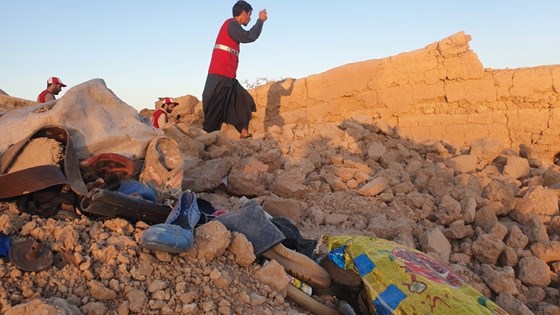Providing support for civilians following earthquakes in Afghanistan
Press release | Date: 11/10/2023 | Ministry of Foreign Affairs
‘The earthquakes in western Afghanistan has brought further suffering to an already hard-hit population. We are now increasing Norway’s support in order to provide life-saving assistance to those affected,’ said Minister of Foreign Affairs Anniken Huitfeldt.

Norway is a major humanitarian donor to the civilian population in Afghanistan.
‘We are now providing an additional NOK 20 million via the International Red Cross and Red Crescent Movement and the World Food Programme. These funds will be used to provide emergency life-saving assistance in the aftermath of the earthquakes and to meet the critical need for food in Afghanistan,’ Ms Huitfeldt said.
The survivors of the earthquakes are in need of food, medical care, water and shelter. The funding from Norway will be used among other things to support the efforts of the Afghan Red Crescent Society, which has sent a number of mobile health teams to the affected areas. The humanitarian needs caused by the earthquakes come on top of a severe ongoing humanitarian crisis across Afghanistan. The UN estimates that two out of three Afghans will need humanitarian assistance in 2023. Millions of people are in need of assistance to meet basic humanitarian needs.
‘My thoughts and sympathies go to all those who have lost family members and loved ones, and to the population at large, which has already endured great suffering,’ Ms Huitfeldt said.
In addition to the UN and the International Red Cross and Red Crescent Movement, the Norwegian humanitarian organisations are playing an important role in the response to the ongoing crisis. The Disaster Response Emergency Fund (DREF) of the International Red Cross and Red Crescent Societies has released approximately NOK 9 million in funding for life-saving assistance. Norway is one of the largest donors to the DREF.
In Afghanistan, ensuring that assistance reaches women and girls is a difficult task.
‘It is vital that the Taliban allows Afghan women aid workers to participate in the response, not least because many women and children have been affected by the earthquakes. This is essential to ensure that help reaches women and children. We are monitoring the situation to ensure that the assistance reaches those who need it most,’ said Ms Huitfeldt.
Norway has already provided approximately NOK 230 million in humanitarian aid to Afghanistan in 2023, and roughly NOK 530 million to support the delivery of basic services and reduce humanitarian needs. No funding from Norway goes to the de facto authorities/Taliban.